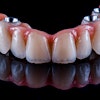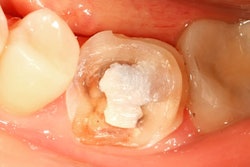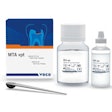Artificial intelligence (AI) can create music, make immersive games, and even aid in the diagnosis of tooth decay. Soon, AI may help make dental fillings, according to a University of Texas at San Antonio (UTSA) news article.
Researchers at UTSA and the University of Texas Health Science Center at San Antonio recently used AI to predict which dental composites perform the best, with the goal of reducing the duration of bringing new composite materials to market.
Despite the various dental composites that are available today for fillings and veneers, there is a lack of standardized data about these materials, including their strength, shrinkage, and resistance to wear in real-world conditions.
Scientists from both schools’ dental and engineering departments collaborated to train machine-learning models to predict the best characteristics and composite materials that offer long-term stability and durability.
“Even though there are thousands of papers on dental composites, the vast majority focus on new or proprietary materials tested under specific lab conditions. Very few studies provide the kind of cross-comparable data that machine learning models need,” said Kyumin Whang, PhD, MS, a Barry K. Norling Endowed Professor in Comprehensive Dentistry at UT Health San Antonio’s School of Dentistry.
From the existing literature, Whang and the researchers cobbled a dataset of 240 commercially available dental composites. From that, they trained nine machine-learning models to identify which properties -- strength, viscosity, or shrinkage -- are the most important for clinical success and which material performed the best, including how well it flowed, resisted fracture, and its durability. The results were evaluated by the researchers using a statistically grounded approach, they said.
Different machine-learning models performed better than others in predicting the best characteristics and performance outcomes (POs) of the materials, according to the article. For instance, the k-nearest neighbors model excelled in predicting flexural modulus (FlexMod) (accuracy = 0.90, precision = 0.92, recall score = 0.90, F1 score = 0.90), the decision tree model outperformed others in assessing flexural strength (FlexStr), with accuracy, precision, and recall and F1 scores of 0.73 each. It also most accurately predicted volumetric shrinkage (ShrinkV) results (accuracy = 0.81, precision = 0.82, recall = 0.81, F1 = 0.82), while logistic regression and support vector machine models predicted shrinkage stress (ShrinkStr) the best (accuracy = 0.89, precision = 0.91, recall = 0.89, F1 = 0.89). Receiver operating characteristic area under the curve analysis confirmed the results, but the researchers reported that the random forest algorithm was more effective at predicting FlexStr and shrinkage, which could be used to overfit the data, they suggested.
Also, the research team reported that AI analysis suggested that triethylene glycol dimethacrylate is a key contributor to FlexMod and ShrinkV, bisphenol A glycidyl dimethacrylate and urethane dimethacrylate contribute to FlexStr, while depth of cure, degree of monomer-to-polymer conversion, and filler loading influence ShrinkStr.
The dataset is a first attempt at compiling composite characteristics and POs. As more data is generated, researchers and dental manufacturers could input data to come up with AI-backed customized materials that dramatically reduce the time involved in bringing novel, tailored dental composites to patients.
“Once we make these models more accurate, we will be able to dial in the desired properties and the AI model would recommend a formulation match,” Whang said. “This will narrow the field from thousands of possible combinations to a targeted few, dramatically reducing the time from concept to clinical use.”



















